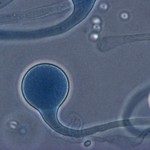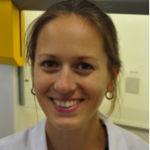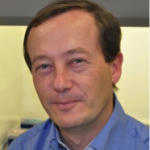About
Histoplasmosis is an endemic mycosis caused by the dimorphic fungus Histoplasma capsulatum. It is found as a mold in the environment and as a yeast at body temperature during infection. This organism is endemic in various part of the world at the exception of Europe. It is a well-documented infection in the US particularly in the valleys of Ohio and Mississipi but not only (Maiga et al. 2018). It is also endemic in south America, and in Asia. The natural history consists in the inhalation of conidia from the environment (bat or bird guano) leading to acute or chronic primary infection or asymptomatic carriage in immunocompetent individuals. Upon immunosuppression, the fungus can reactivate and be responsible for a localized or disseminated disease. Disseminated histoplasmosis has been classified as an AIDS-defining infection. The pathophysiology and the clinical presentation is very close to that of tuberculosis or cryptococcosis. Laboratory diagnosis of histoplasmosis is mainly based on microscopical visualization of the yeast form, culture (very slow growing fungus – until 8 weeks), antigen detection available in regions of high endemicity and DNA detection. PCR assays have been already developed based on the amplification of various DNA targets (Dantas et al. 2013, Gago et al., 2014, Bialek et al. 2002, Muraosa et al. 2016, Simon et al. 2010). Real-time quantitative PCR (qPCR) are available (ITS, NAALADase) but based on DNA detection only.
To improve sensitivity, we developed a new qPCR assay allowing amplification of both RNA and DNA of the mitochondrial large sub unit gene of Histoplasma capsulatum. Preliminary results suggest that this new qPCR assay allows diagnosis of histoplasmosis even in the absence of positive microscopy or culture, thus representing the only biological evidence for histoplasmosis. Additionally, qPCR detection in blood is a marker dissemination. This assay could therefore become a helpful tool for the diagnosis and the management of histoplasmosis.
Several collaborations are being established to further validate the assay with different centers where the prevalence of histoplasmosis is high such as in Thailand, Ivory Coast, and South Africa.






